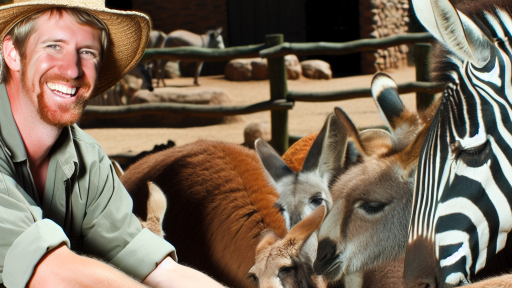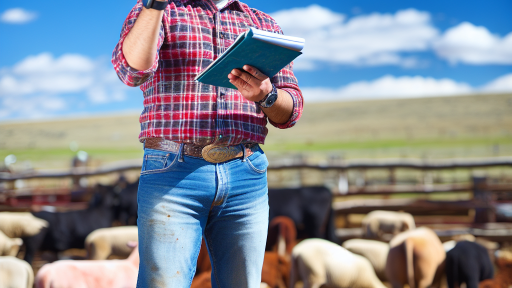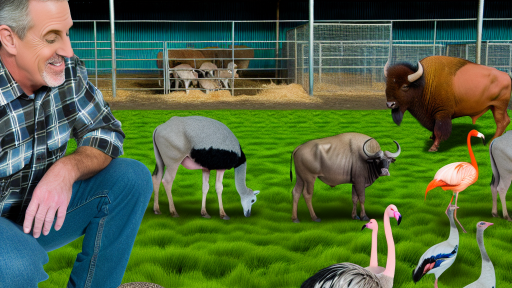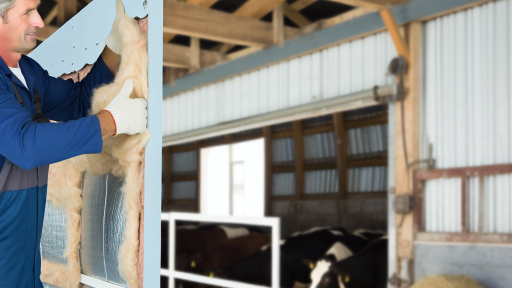Introduction to Livestock Housing Units
Livestock housing units play a crucial role in animal welfare.
They provide shelter and protection from harsh environmental conditions.
Moreover, proper housing units enhance animal productivity and health.
Significance of Livestock Housing
Effective housing prevents the spread of diseases among animals.
It also allows farmers to manage livestock more efficiently.
Furthermore, well-designed units promote comfort and reduce stress.
Overview of Various Housing Options
Different types of livestock require specific housing designs.
For instance, cattle benefit from open barns with good ventilation.
On the other hand, poultry need enclosed, temperature-controlled spaces.
Sheep and goats thrive in facilities that offer both shelter and pasture access.
In addition, modern advancements often lead to innovative housing solutions.
Design Considerations
Several factors influence the design of livestock housing units.
These include climate, animal species, and farm size.
Moreover, accessibility for feeding and cleaning is essential.
Transitioning between different housing systems can offer additional benefits.
Transform Your Agribusiness
Unlock your farm's potential with expert advice tailored to your needs. Get actionable steps that drive real results.
Get StartedUltimately, a well-planned layout maximizes space and promotes productivity.
Key Factors Influencing Livestock Housing Design
Animal Welfare Considerations
Animal welfare is a primary factor in housing design.
Space requirements depend on the type of livestock.
As a result, larger animals need more room to move.
Ventilation is crucial for maintaining a comfortable environment.
Moreover, access to natural light can enhance animal well-being.
Climate and Environmental Conditions
Weather plays a significant role in housing layout.
Regions prone to extreme temperatures require special attention.
Insulated structures can help regulate indoor climates.
Furthermore, building orientation affects sun exposure and wind flow.
Adequate drainage systems prevent water accumulation around housing.
Operational Efficiency
Designing for operational efficiency optimizes daily management.
Ease of access simplifies feeding and cleaning processes.
Flow of movement within the unit should minimize congestion.
Strategically placed feeding areas enhance livestock productivity.
Additionally, thoughtful layout reduces labor costs over time.
Biosecurity Measures
Effective biosecurity prevents disease outbreaks among livestock.
Isolation of incoming animals reduces potential health risks.
Moreover, having separate zones for different groups adds protection.
Regular cleaning stations enhance hygiene within housing units.
Furthermore, controlled access limits outside contamination.
Regulatory Compliance
Compliance with local regulations is essential for housing design.
Construction must meet health and safety standards.
Permits may be required before initiating any projects.
Showcase Your Farming Business
Publish your professional farming services profile on our blog for a one-time fee of $200 and reach a dedicated audience of farmers and agribusiness owners.
Publish Your ProfileLocal zoning laws can dictate specific housing requirements.
Consequently, it is wise to consult with regulatory authorities.
Types of Livestock Housing
Barns
Barns serve as traditional livestock housing structures.
They provide shelter from extreme weather conditions.
Additionally, barns protect livestock from predators.
Commonly, barns are designed for specific types of animals.
For instance, dairy barns cater specifically to cows.
Ventilation is crucial in barn design.
Proper airflow keeps animals healthy and comfortable.
Moreover, barns need adequate space for movement.
This prevents stress and promotes natural behaviors.
Sheds
Sheds offer versatile housing for livestock.
They can house various animals, from sheep to goats.
Unlike barns, sheds are often simpler and more lightweight.
Ease of construction is a significant advantage of sheds.
They can be easily relocated as needed.
While they provide shelter, sheds also require proper ventilation.
Designing sheds with airflow in mind is essential.
Furthermore, sheds need to protect against adverse weather elements.
Well-placed sheds support animal welfare.
Open-Aired Structures
Open-aired structures are beneficial for certain livestock types.
These environments maximize natural ventilation.
Such designs are particularly effective in mild climates.
Open-aired structures allow animals access to fresh air.
However, they require thoughtful placement on the farm.
Proximity to shade sources is important for animal comfort.
Additionally, these structures should include windbreaks.
Windbreaks help protect livestock from cold winds.
They also enhance overall animal health and productivity.
You Might Also Like: Preventing Diseases in Exotic Livestock
Space Requirements
Assessing Livestock Specific Needs
Different types of livestock require varying amounts of space.
Understanding these specific needs is crucial for effective management.
Both welfare and productivity depend on appropriate space allocation.
For instance, cattle need more room compared to smaller animals.
Additionally, spatial requirements change with age and size.
Calculating Space for Cattle
Adult cattle typically require approximately 100 square feet each.
Calves will need about 40 square feet per animal.
These numbers ensure they have room for movement and rest.
Also, the layout should allow for feeding and watering stations.
Space Considerations for Swine
Swine require around 10 to 15 square feet per pig.
Showcase Your Farming Business
Publish your professional farming services profile on our blog for a one-time fee of $200 and reach a dedicated audience of farmers and agribusiness owners.
Publish Your ProfilePens should remain clean to promote health and growth.
Group sizes also affect individual space; fewer pigs often mean more space per animal.
Room Requirements for Poultry
Poultry need about 2 to 3 square feet per bird in a barn setting.
This space allows for natural behaviors such as pecking and foraging.
Outdoor access can enhance their welfare and overall health.
Understanding Sheep and Goats’ Needs
Sheep and goats generally need 15 to 20 square feet per animal.
Space is essential for grazing and social interactions.
Moreover, shelter area must provide protection from weather extremes.
Creating Efficient Layouts
Efficient layouts maximize space while enhancing animal welfare.
Consider group housing to improve social structures among livestock.
Utilizing a modular design allows for future expansion if necessary.
Utilizing Technology for Space Planning
Technology plays a vital role in planning space effectively.
Data analysis helps in understanding optimal stocking rates.
Smart farming tools can further streamline housing layouts.
Find Out More: Essential Features Of Modern Livestock Housing
Ventilation and Climate Control
Importance in Housing Units
Proper ventilation is crucial for livestock health.
It helps maintain optimal air quality within housing units.
Inadequate ventilation can lead to respiratory problems in animals.
Additionally, it can cause the buildup of harmful gases.
Climate control directly impacts the comfort of livestock.
Temperature extremes can stress animals and reduce productivity.
Implementing effective ventilation systems minimizes these risks.
Benefits of Effective Ventilation
Effective ventilation promotes a healthier environment.
It reduces humidity levels, limiting the risk of diseases.
Moreover, it helps dissipate airborne pathogens.
Consistent airflow also enhances feed efficiency.
Furthermore, well-ventilated spaces lead to improved growth rates.
Types of Ventilation Systems
Selecting the right ventilation system is essential.
Natural ventilation uses design features to facilitate airflow.
Mechanical ventilation relies on fans and electrical systems.
Each method has advantages and challenges.
Natural systems can be cost-effective and energy-efficient.
On the other hand, mechanical systems offer better control.
Maintaining Optimal Climate Conditions
Climate control systems also regulate temperature and humidity.
Heat stress can significantly impact livestock performance.
Implementing cooling systems ensures animal comfort and productivity.
Additionally, heated spaces can protect against cold weather.
Regular monitoring of these systems is vital for success.
Best Practices for Ventilation and Climate Control
Conduct routine inspections of ventilation systems.
Adjust airflow based on seasonal changes and animal needs.
Showcase Your Farming Business
Publish your professional farming services profile on our blog for a one-time fee of $200 and reach a dedicated audience of farmers and agribusiness owners.
Publish Your ProfileConsider utilizing fans for increased airflow during summer months.
Install heaters to maintain a warm environment in winter.
Ensure all systems are energy-efficient to reduce costs.
Regular training for staff ensures proper system management.
Discover More: Optimal Feeding Practices for Goats
Flooring Options: Evaluating Materials for Efficiency and Comfort
Importance of Flooring in Livestock Housing
The flooring in livestock housing plays a crucial role in overall animal welfare.
A well-designed floor enhances comfort for the animals.
Furthermore, it significantly impacts the efficiency of waste management.
Choosing the right flooring can reduce stress among livestock.
Additionally, it promotes better health outcomes and productivity.
Types of Flooring Materials
Several flooring materials are available for livestock housing.
Each material comes with its own benefits and drawbacks.
Concrete Flooring
Concrete is a popular choice due to its durability.
It provides a robust surface that withstands heavy loads.
Moreover, concrete floors are easy to clean and maintain.
However, they can be hard and uncomfortable for animals.
Adequate bedding can alleviate some discomfort.
Rubber Flooring
Rubber flooring offers excellent cushioning for livestock.
This material reduces the risk of injury from slips or falls.
Additionally, rubber is more forgiving on joints.
However, it may require more frequent cleaning compared to concrete.
Overall, it enhances animal comfort significantly.
Wood Flooring
Wood can provide a warmer environment for livestock.
It offers good traction and cushioning for animals.
However, wood flooring may be less durable compared to concrete or rubber.
It also requires regular maintenance to prevent decay.
Choosing treated wood can extend the life of the flooring.
Evaluating Flooring Options
When selecting flooring, several factors should be considered.
- Comfort for the animals is paramount.
- The ease of cleaning and maintenance affects overall efficiency.
- Cost and availability of materials can influence decisions.
- Environmental impact should also be considered.
Conducting a thorough evaluation ensures the best choice for livestock welfare.
Find Out More: Maintaining Transport Vehicles for Livestock Safety
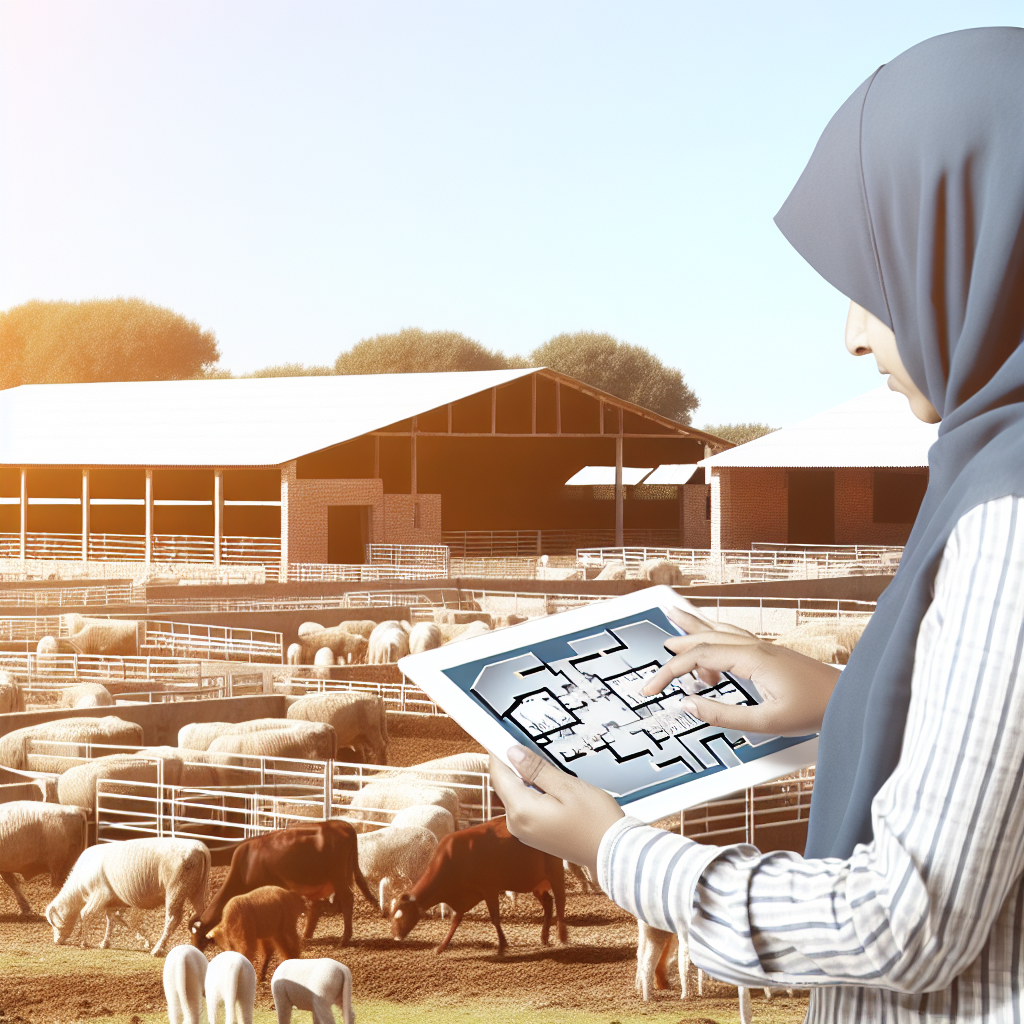
Designing for Animal Welfare: Enrichment and Social Needs
Importance of Animal Welfare
Animal welfare is critical in livestock housing design.
Improving welfare enhances productivity and overall health.
Economically, better welfare translates to reduced veterinary costs.
Moreover, it aligns with consumer preferences for ethical farming.
Incorporating Enrichment in Housing
Enrichment encourages natural behaviors among livestock.
It can include structural features like perches or climbing opportunities.
Additionally, sensory stimulation is vital for animal engagement.
Different species require diverse enrichment types.
For instance, pigs benefit from rooting materials like straw.
On the other hand, chickens enjoy access to dust baths.
Showcase Your Farming Business
Publish your professional farming services profile on our blog for a one-time fee of $200 and reach a dedicated audience of farmers and agribusiness owners.
Publish Your ProfileFacilitating Social Needs
Social interactions play a vital role in livestock welfare.
Housing units should enable species-specific social behaviors.
Cattle, for example, thrive in groups and prefer close social bonds.
In contrast, solitary animals like certain goats require isolation options.
Housing design must minimize stress during mixing processes.
Space and Movement Considerations
Providing ample space in housing reduces aggression.
Livestock need room to express natural behaviors.
Adequate space also decreases injury risk during social interactions.
Flooring must support movement while ensuring safety.
Creating Comfortable Environments
The thermal comfort of livestock influences their health.
Effective ventilation systems help regulate temperature and humidity.
Additionally, natural light enhances the overall environment.
Consider incorporating shaded areas to protect from extreme weather.
Integration of Technology
Modern technologies can enhance livestock housing efficiency.
Automated feeding systems ensure timely and balanced nutrition.
Monitoring systems help track animal wellbeing and health indicators.
Such innovations lead to proactive management practices.
Collaborating with Experts
Collaboration with veterinarians and behavioral experts is essential.
They can offer insights into species-specific needs and behaviors.
Regular assessments can help improve housing designs continually.
Engaging with producers ensures designs meet practical requirements.
Case Studies: Successful Livestock Housing Layouts
Innovative Designs by Green Acres Farm
Green Acres Farm implemented a unique circular layout for their cattle housing.
This design facilitates better ventilation throughout the facility.
Furthermore, it enhances animal movement and reduces stress levels.
Natural lighting plays a significant role in improving the environment.
As a result, the farm reported increased milk production and healthier livestock.
Improved Systems at Meadow Brook Ranch
Meadow Brook Ranch adopted a modular housing system for their pigs.
This layout allows for easy expansion based on population needs.
Each module includes separate feeding and resting areas.
Such divisions promote hygiene and minimize disease spread.
The ranch has observed improved piglet growth rates since the redesign.
Eco-Friendly Solutions at Sunny Fields Farm
Sunny Fields Farm focused on sustainability in their livestock housing design.
The farm features solar panels to power its operations.
Additionally, rainwater collection systems support water needs.
These features contribute to lower operational costs and environmental impact.
Consequently, Sunny Fields has gained recognition for its eco-friendly practices.
Utilizing Vertical Space in Hilltop Ranch
Hilltop Ranch redefined space usage by building multi-tier housing units.
This design maximizes land efficiency while accommodating more animals.
It provides ample space for exercise, feeding, and rest.
Such configurations meet both animal welfare standards and operational needs.
Showcase Your Farming Business
Publish your professional farming services profile on our blog for a one-time fee of $200 and reach a dedicated audience of farmers and agribusiness owners.
Publish Your ProfileThe ranch has experienced lower feed costs and better animal health.
Benefits of Open-Air Structures at Pure Pastures Farm
Pure Pastures Farm focuses on using open-air structures for their sheep.
These structures encourage natural behaviors while providing shelter.
They reduce stress and promote overall well-being for the animals.
The farm combines traditional practices with modern technology.
As a result, they have seen enhanced wool quality and production levels.
Future Trends in Livestock Housing Designs and Technology
Integration of Smart Technology
Smart technology plays a pivotal role in modern livestock housing.
This technology improves monitoring and management of livestock.
For instance, sensors track health and environmental conditions.
Moreover, automated systems ensure optimal feeding and watering.
These advancements enhance animal welfare and operational efficiency.
Sustainable Construction Materials
Sustainable materials are becoming essential in livestock housing.
Utilizing recycled or bio-based materials reduces environmental impact.
Additionally, these choices often lead to reduced energy consumption.
Farmers are increasingly adopting solar panels and wind turbines.
Such measures contribute to a more self-sufficient energy model.
Improved Ventilation and Climate Control
Proper ventilation is critical for livestock health and productivity.
New designs incorporate natural ventilation systems effectively.
For example, these designs reduce humidity and ammonia levels.
Furthermore, climate control technologies allow for precise temperature regulation.
Consequently, animals can thrive in comfortable living environments.
Space Utilization and Modular Designs
Space utilization is crucial in modern livestock housing units.
Modular designs allow for flexibility and future expansion.
These designs help farmers adapt to changing needs and conditions.
Additionally, effective layouts promote better animal movement and comfort.
This approach leads to improved overall productivity and well-being.
Focus on Animal Welfare and Behavior
Trends indicate a growing emphasis on animal welfare in designs.
Spaces are designed to accommodate natural behaviors and interactions.
For instance, providing smaller group housing can enhance social structures.
Moreover, enriched environments support mental health for livestock.
Ultimately, this shift leads to healthier animals and better production outcomes.
Additional Resources
Prediction of Dairy Housing Construction Costs – ScienceDirect
Facility Design, Shelter Animal Housing and Shelter Population …

